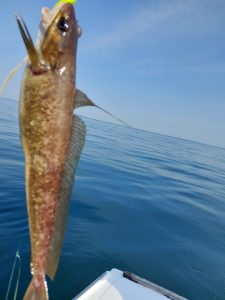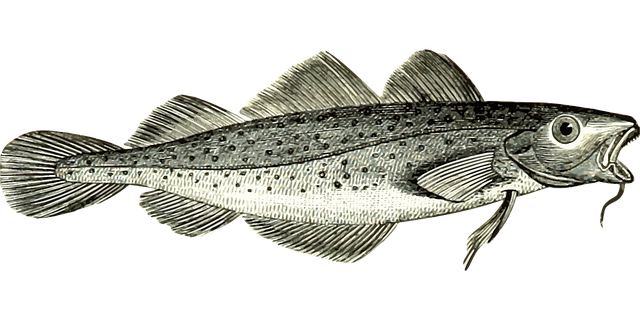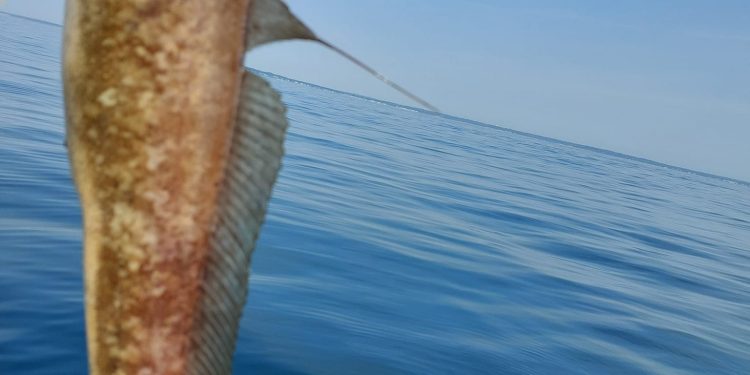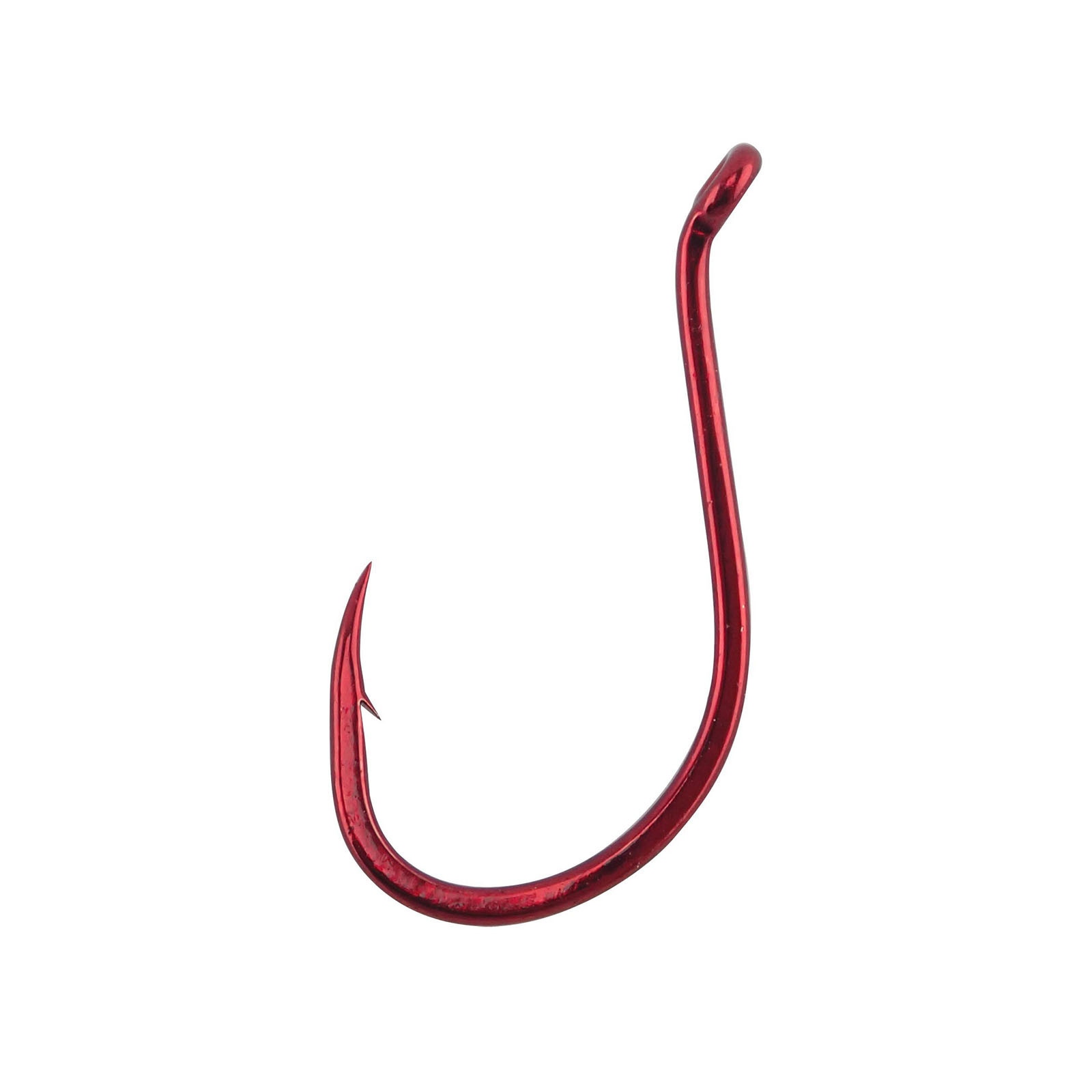Ling Cod in Rhode Island
The ocean is full of mysteries, and one of its most interesting residents is the Ling Cod. Found in the deep waters near the coast, this fish is native to the North American west coast and east coast from the Gulf of Alaska to Baja California, Mexico. This fish has caught the attention of scientists and ocean lovers. In this article, we will explore where the Ling Cod lives, what it looks like, how it behaves, and why it is important for the ocean’s health. We will also look at the efforts made to protect this amazing creature.

Key Takeaways
- Ling Cods are usually found in deep coastal waters and prefer rocky environments.
- These fish have a unique look with mottled colors that help them blend into their surroundings.
- Ling Cods are territorial and often hunt by ambushing their prey.
- They play a crucial role in marine ecosystems as top predators.
- Conservation efforts are important to ensure the survival of Ling Cod populations.
The Ling Cod’s Natural Habitat
Ling Cod, scientifically known as Ophiodon elongatus, inhabits the Pacific coast of North America. They thrive in cold, rocky waters and are often found in kelp forests or near underwater caves. Their habitat significantly influences their unique traits. The rocky terrain and abundant kelp offer excellent camouflage and hunting grounds for these predators. We have these species in our backyard here in Newport, RI! If you catch a Female lingcod please respect and protect spawning female lingcod. Throw her back so the adult lingcod can protect immature fish out there!

Distinctive Features of the Ling Cod
Physical Appearance
The Ling Cod has a robust, elongated body that helps it navigate through rocky underwater landscapes. Ling Cod is also known as ‘buffalo cod’ and ‘cultus cod’. Its large head and a gaping mouth filled with sharp teeth make it a formidable predator. The mottled coloration, ranging from olive green to brown, allows it to blend seamlessly with its surroundings.
Coloration and Camouflage
The Ling Cod’s skin features a mottled pattern that provides excellent camouflage. This coloration helps it hide among rocks and crevices, making it an effective ambush predator. The ability to blend in with its environment is crucial for both hunting and avoiding larger predators.
Adaptations for Survival of Juvenile Lingcod
Ling Cod are voracious predators with several adaptations that aid in their survival. Their powerful jaws and sharp teeth are perfect for catching and holding onto prey. Additionally, their elongated bodies allow them to move swiftly through the water, and their coloration provides the necessary camouflage to stay hidden from both prey and predators.
The Ling Cod’s distinctive features, from its sharp teeth to its mottled skin, make it a fascinating subject for marine biologists and enthusiasts alike.
Behavioral Patterns of Ling Cod
Territorial Nature
Ling Cod are known for their territorial nature. They often claim a specific area and defend it fiercely against any intruders. These fish can be quite aggressive if they feel threatened, so observing them from a safe distance is important.
Hunting Techniques of Voracious Predators
Ling Cod are ambush predators. They are voracious predators that feed on a variety of prey, including invertebrates, different species of fish, and even smaller octopuses and rockfish. They hide in rocks and crevices, waiting for the perfect moment to strike. Their mottled greenish-brown skin helps them blend in with their surroundings, making it easier to surprise their prey. They eat a variety of marine life, including smaller fish, crustaceans, and cephalopods.
Diet and Feeding Habits
Ling Cod are opportunistic feeders. They eat whatever prey is available in their habitat. Female Ling Cod mature at a different age and size compared to males and have different spawning behaviors. Their diet mainly consists of smaller fish, squid, and crustaceans. This varied diet helps them survive in different environments.
Ling Cod are solitary creatures, often found hiding in rock crevices and caves. This behavior not only helps them avoid predators but also provides a safe place for their eggs. Juvenile Ling Cod settle on the bottom in specific habitats and begin feeding on small fish.
Reproduction and Lifespan
Mating Rituals
Mating typically occurs between October and December. Male lingcod guard the egg nests until hatching, which can take 5 to 11 weeks. The female releases eggs after the male nudges her swollen abdomen. He then wraps around her to fertilize the 7,000 to 10,000 white to yellow eggs, which she shapes into a ball. This egg mass doesn’t need to stick to anything because the parents take turns wrapping their tails around it, ensuring good aeration until the young hatch 13 to 16 weeks later.
Egg Protection and Nest Guarding Male Lingcod
The parents are very protective of the egg mass. They take turns holding and turning it to make sure the eggs get enough air. This care continues until the eggs hatch, which can take up to 16 weeks. The dedication of the parents is crucial for the survival of the young.
Longevity
One of the most intriguing aspects of Ling Cod’s behavior is its remarkable lifespan. These fish can live for up to 25 years or more, growing steadily throughout their lives. Their longevity makes them a vital part of the underwater ecosystem.
The juveniles settle into the adult sedentary lifestyle between the ages of 6 months and 2 years, depending on food supply and den availability.
Ecological Role of Ling Cod
Predatory Impact
Ling Cod are top predators in their environment. They are vulnerable mainly to marine mammals, such as sea lions and harbor seals. They help keep the population of smaller fish in check, which stops overpopulation and keeps the ecosystem balanced. Their presence is a sign of a healthy marine environment because they need clean, oxygen-rich water to live.
Role in Marine Ecosystems
Ling Cod are a key part of the marine food web. They eat a variety of prey, including rockfish, squid, and octopus. This helps keep the populations of these species under control. They also provide food for larger predators like seals and sea lions.
Interactions with Other Species
Ling Cod interact with many other species in their habitat. They are both predators and prey, making them an important link in the food chain. Ling Cod are highly sought after by recreational anglers due to their aggressive nature and delicious taste. Their role help maintain the balance and health of the marine ecosystem.
The presence of Ling Cod in an area often indicates a healthy and thriving marine ecosystem.
Conservation Efforts for Ling Cod
Threats to Ling Cod Populations
Ling Cod populations have faced significant challenges due to overfishing and habitat destruction. These factors have led to a drastic decrease in their numbers in recent years. Protecting this species is crucial to maintaining the balance of marine ecosystems.
Conservation Programs
To help conserve Ling Cod, several programs have been put in place. The Board of Fisheries in Alaska considers proposed changes to fisheries regulations, relying on biological and socioeconomic information, public input, and guidance from relevant departments. One notable effort is the creation of Marine Protected Areas (MPAs), where fishing regulations are strictly enforced. These areas provide a haven for Ling Cod to grow and reproduce without human interference. Additionally, fishing regulations limit the amount of Ling Cod that can be caught per person or boat trip.
Sustainable Fishing Practices in Commercial Fisheries
Sustainable fishing practices are essential to ensure the survival of Ling Cod. By following these practices, we can help preserve our oceans’ delicate ecosystems and ensure that future generations can enjoy the many benefits of Ling Cod. Some sustainable practices include:
- Using fishing gear that minimizes habitat damage
- Implementing catch limits to prevent overfishing
- Supporting local and international conservation efforts
The Nature Conservancy has teamed up with the University of Washington and Ling Cod fishermen in Ilwaco to invent a new fishing pot that protects habitat and sea life. This collaboration is a step forward in sustainable fishing practices.
By taking these measures, we can help protect Ling Cod populations and maintain the health of our marine environments.
Conclusion
In our journey through the world of the Ling Cod, we’ve uncovered just a glimpse of what makes these creatures so special. From their rocky homes to their role as top predators, Ling Cod is truly remarkable. As we continue to explore and learn, we can help protect these amazing fish and their underwater world. Whether you’re a scientist or just love the ocean, there’s always more to discover about the Ling Cod. So next time you’re near the sea, keep an eye out—you might just find another piece of the puzzle.
Frequently Asked Questions
What is a Ling Cod?
A Ling Cod is a type of fish found in coastal waters, known for its large mouth and sharp teeth. It’s a popular catch among anglers and is known for its unique appearance.
Where do Ling Cod live?
Ling Cod are usually found in the rocky areas of coastal waters, particularly in the North Pacific Ocean. They prefer deep waters and can often be found hiding in crevices.
What do Ling Cod eat?
Ling Cod are carnivorous and have a varied diet. They eat smaller fish, squid, and crustaceans. Their sharp teeth help them catch and eat their prey.
How do Ling Cod reproduce?
Ling Cod have interesting mating rituals. The male guards the eggs after the female lays them, ensuring they are safe from predators until they hatch.
Why are Ling Cod important to the ecosystem?
Ling Cod play a crucial role in marine ecosystems as predators. They help maintain the balance by controlling the population of smaller fish and other marine creatures.
Are Ling Cod endangered?
Ling Cod are not currently endangered, but they face threats from overfishing and habitat loss. Conservation efforts are important to ensure their populations remain stable.





